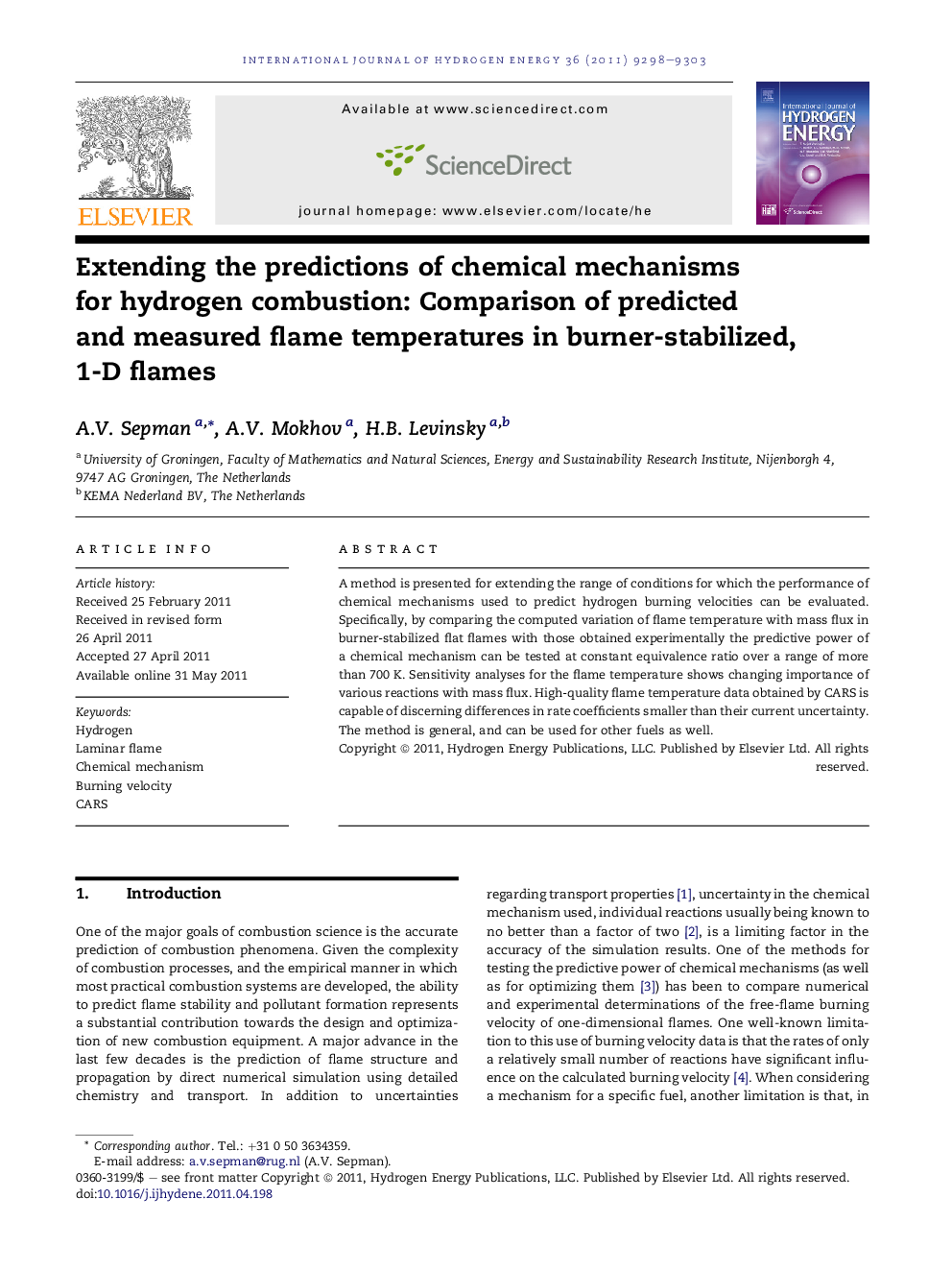| Article ID | Journal | Published Year | Pages | File Type |
|---|---|---|---|---|
| 1282526 | International Journal of Hydrogen Energy | 2011 | 6 Pages |
A method is presented for extending the range of conditions for which the performance of chemical mechanisms used to predict hydrogen burning velocities can be evaluated. Specifically, by comparing the computed variation of flame temperature with mass flux in burner-stabilized flat flames with those obtained experimentally the predictive power of a chemical mechanism can be tested at constant equivalence ratio over a range of more than 700 K. Sensitivity analyses for the flame temperature shows changing importance of various reactions with mass flux. High-quality flame temperature data obtained by CARS is capable of discerning differences in rate coefficients smaller than their current uncertainty. The method is general, and can be used for other fuels as well.
► The variation in flame temperature with mass flux in burner-stabilized flames. ► Method extends the range accessible for modeling to non-adiabatic flames. ► The impact of the various reactions changes with mass flux. ► The data are capable of discerning differences in reaction rate coefficients. ► The data can be useful for mechanism optimization.
